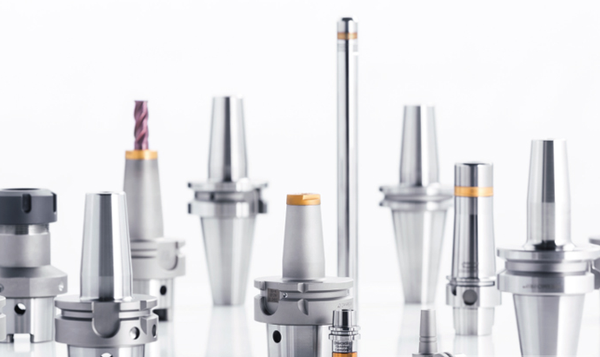1. Workpiece factors affect toolholder selection
Factors that influence toolholder selection include the machinability of the workpiece material in each operation and the configuration of the part, which can determine the toolholder size required to achieve a specific profile or feature. The handle should be as simple and easy to use as possible to reduce the possibility of operator error. The basic components of the machine tool play a key role. Fast machines with leading guides will take advantage of toolholders designed for high-speed applications, while machines with box grooves will support heavy-duty machining. Multi-tasking machines can complete turning and milling/drilling processes simultaneously. The tool holder can also be selected according to the machining strategy. For example, a shop will choose different tools to increase productivity in a high-speed cutting (HSC) process, which involves shallower HHS cutting depths, or in a high-performance cutting (HPC) application, which focuses on machine tools with sufficient power but limited speeds. Produces higher metal removal rates.

2. Each tool handle should meet specific process requirements
Whether simple side-mounted, jacketed, heat-shrinkable, mechanical or hydraulic, tool handles should meet specific process requirements. Spring collets and interchangeable collets are common round shank technologies. The cost-effective Type ER is available in a variety of sizes and with sufficient clamping force for reliable, lightweight milling and drilling processes. The high-precision ER sheathed tool holder features low radial runout (less than 5 meters at the tool tip) and a symmetrical design to balance high-speed machining, while the reinforced tool holder can be used for heavy-duty machining. The shrink-fit tool holder provides strong clamping force, and the compact handle design provides good access to tricky part features. Reinforced toolholders can be used for medium to heavy milling, but the clamping force depends on the toolholder ID and toolholder tolerances.

3. The spindle or tapered end determines the torque transmission capability and tool alignment accuracy
Just as important as how the tool holder holds the tool is how the tool holder is mounted on the machine tool spindle. Traditional toolholder tapers in BT, DIN and CAT are suitable for smaller machine tools but may be limiting in high-speed machining. Models with double-sided contact with the taper and end face of the tool holder can provide greater stiffness and accuracy, especially in the case of large overhangs. Reliable transmission of greater torque requires larger cone dimensions. The choice of toolholder taper pattern often varies by region. HSK is often used for five-axis machining. PSC (Polygon Clamping System: Capto) and KM connections are mainly used in multi-task machine tools and adopt ISO standards. KM CAPTO and KM Capto are modular systems that allow the assembly of tools of specific lengths by combining extension or reduction poles. With the increasing popularity of multi-task machine tools, toolholders that can perform multiple processing types such as turning, milling, and drilling in one clamping are becoming more and more popular. Machining shops must pay attention to the importance of tool holders in the machining system and know how to correctly match the correct tool holder with specific machine tools, machining strategies, and workpieces to increase productivity and reduce costs.
